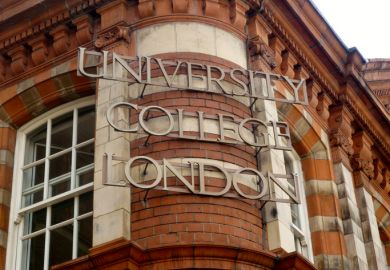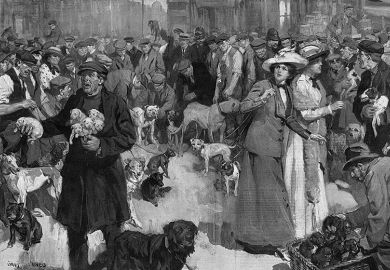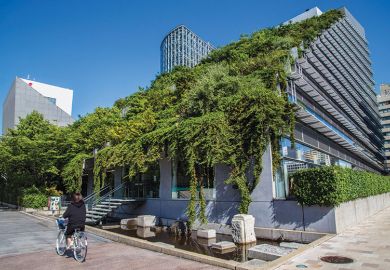In the past decade or so western academics concerned with the Islamic world have been faced increasingly with a dilemma: what is their role, and what is their present and future audience? The recent reappraisals by Muslim nations of their identity and culture, together with local political conflicts have made large areas of the Islamic world inaccessible to western scholars. Afghanistan, Iran, Iraq and Libya are effectively closed, and the governments of many other Muslim countries such as Egypt and Algeria, while relying on western support for their survival, are reluctant to let western academics move freely around their religious buildings and historic sites, fearing their own peoples' hostility to their regimes, and by extension to their distinguished foreign guests.
Many scholars have not yet adjusted to the changes in the relationship between the West and the Islamic world. Islamic architecture is perceived as enmeshed in the past, and their mental map of the lands of Islam has remained much the same as that of the Crusaders: the Middle East and North Africa, the countries bordering Europe. For "fresh" studies they may have to make do with a distant memory of a brief visit to a building, or descriptions in earlier publications, making their work increasingly theoretical and distanced from the actual built environment. The people whose architecture they attempt to study find little of interest in their efforts, while the subject is no longer considered of general interest or importance in the West, reducing the academics to seeking a small audience among themselves.
This is perhaps the position in most British institutions, but elsewhere, and particularly in the United States, a few establishments such as the Aga Khan Program at Harvard and MIT, have instigated a different -- and perhaps more realistic -- approach towards the architecture of the Muslim nations. It is seen as a profession, as well as a living art with a strong historical background, incorporating a great variety of forms and expression as a result of cultural and climatic requirements ranging from the eastern coasts of Africa to the western provinces of China. Islamic architecture is taught together with its history in design courses, rather than as purely theoretical courses in architectural history. In this new approach there is an awareness that the study of any particular aspect of architecture is only possible if there is a direct dialogue with those who are involved in creating and using it, and that a clear understanding will not be achieved merely through the works of western academics, often written in isolation.
Two recent books, Robert Hillenbrand's Islamic Architecture and The Mosque edited by Martin Frishman and Hasan-uddin Khan exemplify these two different approaches.
The Mosque takes a single building type, perhaps the most important: the house for public prayer and gatherings, the first example of which was built by the Prophet himself. The book is a journey through different nations of the Islamic world exploring their architecture through some of the best examples of their most significant religious buildings, both old and new. This lavishly illustrated book is not presented as an academic work, but is written for an informed non-specialist public both in the West and also in Muslim countries.
As each chapter is written by a different author the quality varies. The chapters on sub-Saharan Africa by Labelle Prussin, China by Luo Xiaowei, and South-east Asia by Hugh O'Neill provide interesting information on the mosques of these regions, often missing from other general books on Islamic architecture. Gulru Necipoglu's contribution on Turkey is concise and well structured, giving a brief but learned account of the mosques of Anatolia from the Seljuq period (11th-13th century) to the end of the Ottomans. The chapters on Spain and North Africa by Antonio Fernandez-Puertas and on East Africa by Mark Horton are also informative.
The chapters on the central Arab lands (Middle East) by Dogan Kuban, and Iran and Central Asia by Bernard O'Kane have little fresh material, but are beautifully illustrated, although some of the photographs from Iran and Central Asia seem to come from old slide collections. A weaker chapter is that on India, written by Perween Hasan, a professor at Dhaka University, with limited access to the rest of the Indian subcontinent. The choice of buildings is restricted and does not fully represent the wide range of mosque design in the subcontinent. In three short final chapters Oleg Grabar, Hasan-uddin Khan and Mohammed Arkoun discuss various aspects of mosques in the life of modern Muslims, and give examples of recent mosques, such as the Qasr al-Hokm mosque in Riyadh designed by Rasem Badran, the New Gourna mosque near Luxor by Hassan Fathy, the Sher-e-Bangla Nagar mosque in Dhaka by Louis Kahn, and the University of Jondishapur mosque in Iran by Kamran Diba. Other subjects discussed are Islam and the form of the mosque by Martin Frishman, the role of calligraphy by Wheeler M. Thackston, applications of geometry by Mohammad al-Asad, and regionalism by Ismail Serageldin.
Hillenbrand's book, on the other hand, is intended to be an academic study, in the words of the publisher a "major reference work, covering Spain to Afghanistan". The author has amassed and catalogued a large number of buildings, and his long and detailed text describes meticulously the individual buildings and discusses the relationship between them, as well theorising on their role in the development of forms and building types. Hillenbrand has consulted a large number of recently published scholarly articles, and includes the buildings in their historical context, with the aim of filling gaps in the understanding of the historical development of the building types, although he does not give adequate references to any building, and the referencing method and bibliography is such that it is not possible for an expert reader, let alone a student, to find most of the sources (particularly those published in periodicals) through this work.
The book is well illustrated with line drawings and colour and black and white plates. The line drawings given at the end of the book are compiled from original publications, and provide a valuable tool for comparing the planning of the buildings. The three-dimensional drawings in the text, however, are apparently the work of draftsmen who have never seen or investigated the buildings, and seem to have been based on two-dimensional drawings from earlier articles. These should be viewed with caution, as they sometimes misrepresent the structure, and typify the drawbacks of working in isolation.
In spite of the all-encompassing title, the book does not attempt to represent the architecture of the Islamic world as a whole, and suffers from many self-imposed limitations. The geographical area is confined to Spain, North Africa, and the Near and Middle East, leaving aside the architecture of two-thirds of the population of the Islamic world: east coastal and sub-Saharan Africa, the Indian subcontinent, North-western China and South-east Asia. The historical range is also restricted to the early days of Islam up to the 13th century, with some later examples from the 14th-16th century, omitting the 17th19th-century architecture that forms the characteristic historic cores of many present-day Islamic cities.
More seriously, however, the subject matter of the book is both restricted and perhaps misconstrued. Islamic architecture is categorised into seven building types: the mosque, minaret, madrasa (theological college), mausoleum, caravanserai and palace, setting aside all other forms. This is an arbitrary choice and it is not clear what purpose is served by it, particularly as the approach has entailed "the rigorous exclusion of minor building types such as baths or bridges, and of urbanism". Is the intention to show the main components of an Islamic city, or to separate religious from secular functions? This leaves the compiler with the problem of the religious role of secular buildings and vice versa. And if we accept the author's arrangement, and look at the religious buildings, why is the minaret considered as a separate type, with its own design development, when to a Muslim it is part of the mosque? It is as if the belfry were to be classified as a separate entity from the church. On the other hand, the primary function of caravanserais and palace complexes is certainly not of a religious nature, the one being associated with commerce, and the other with political power, often in Islam in conflict with religion.
It appears that the book does in fact aim to provide a wider view of Islamic architecture, but we learn little about public buildings such as the serais (commercial urban offices and warehouses), market squares, covered market streets (bazaars), and hamams (bath-houses). The market squares and particular cross-roads are not without religious significance, as they housed the seat of the qazi, the religious judge and arbitrator. Bathhouses not only have important religious and social functions, but also display a wide range of complex designs. The list of building types not included in the book is long and includes khanaqahs (Sufi centres), takyas (covered or open squares for Shi'ite gatherings), water reservoirs, bridges, garden structures (including the architectural elements in Islamic garden design) and military architecture.
However, what is perhaps more questionable is whether Hillenbrand's approach in classifying buildings can provide an overall view of the architectural qualities of an Islamic town. Indeed the book's treatment of towns and their arrangement is nominal, and we learn little about their planning, spatial organisation and urban fabric. Instead of being seen in context, and in relationship with each other, the structures are categorised and labelled as museum exhibits. This reduces a living changing environment to a subject of observation from a distance, to be assessed in the terms of arguments in obscure scholarly papers. In short Hillenbrand's recent contribution is a historical study of certain building types of the mediaeval Islamic period through architectural or archaeological remains in the Near and Middle East and North Africa; a book on the wider aspects of Islamic architecture it is not.
Mehrdad Shokoohy is a senior lecturer in architecture and urban design, University of Greenwich.
The Mosque: History, Architectural Development and Regional Diversity
Editor - Martin Frishman and Hasan-uddin Khan
ISBN - 0 500 34133 8
Publisher - Thames and Hudson
Price - £36.00
Pages - 288pp
Register to continue
Why register?
- Registration is free and only takes a moment
- Once registered, you can read 3 articles a month
- Sign up for our newsletter
Subscribe
Or subscribe for unlimited access to:
- Unlimited access to news, views, insights & reviews
- Digital editions
- Digital access to THE’s university and college rankings analysis
Already registered or a current subscriber? Login



